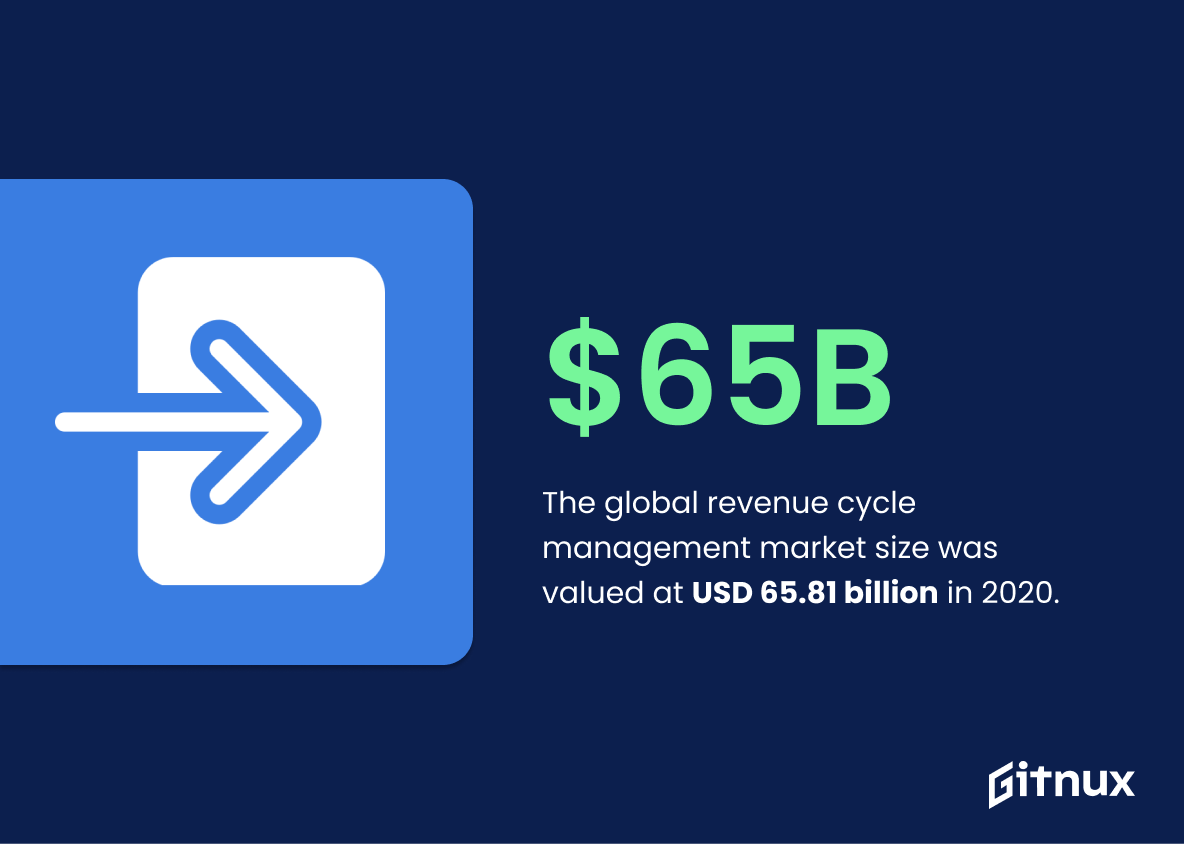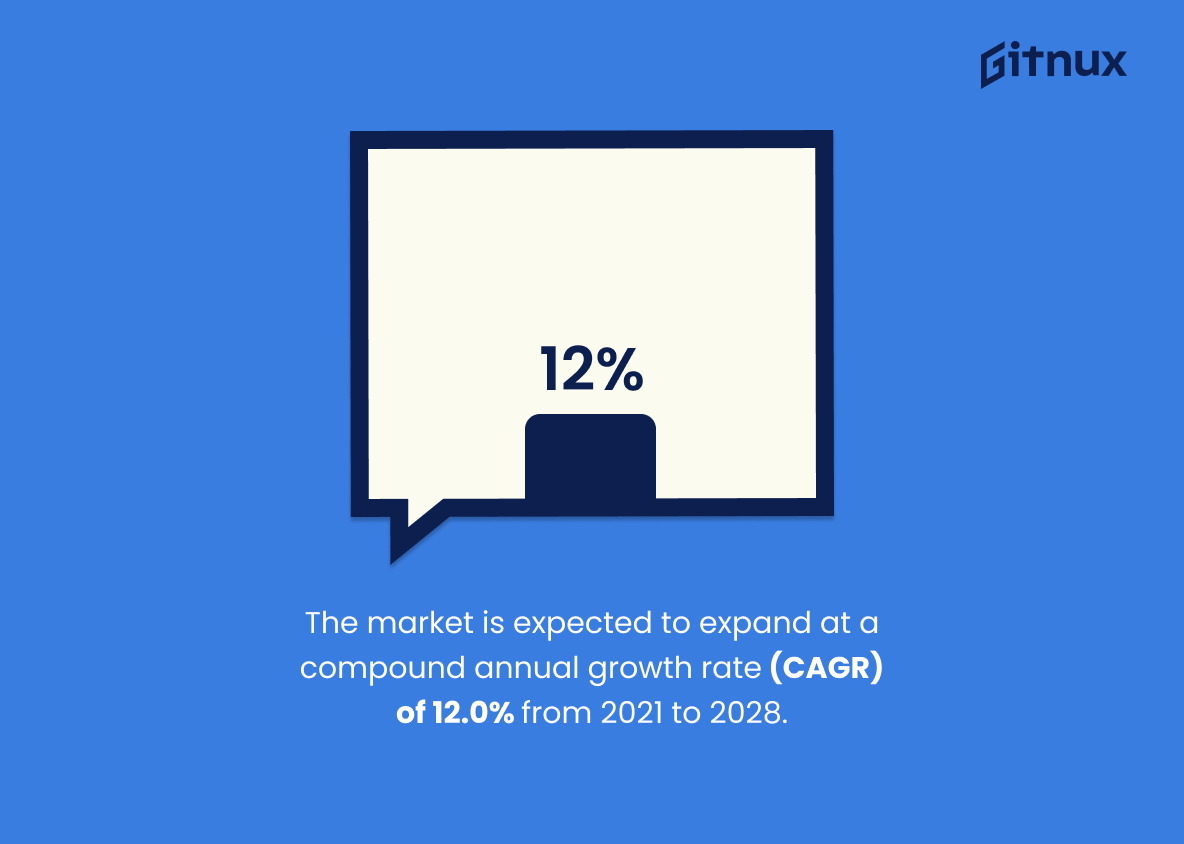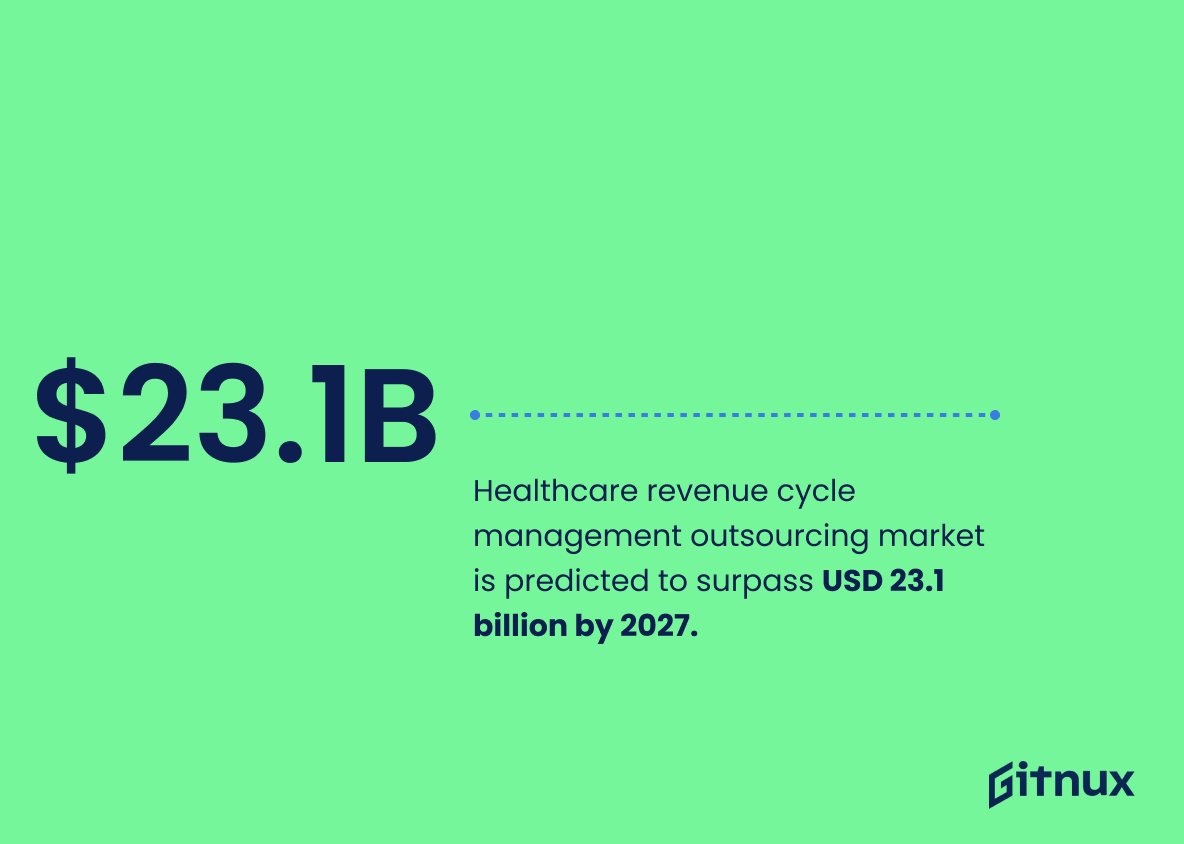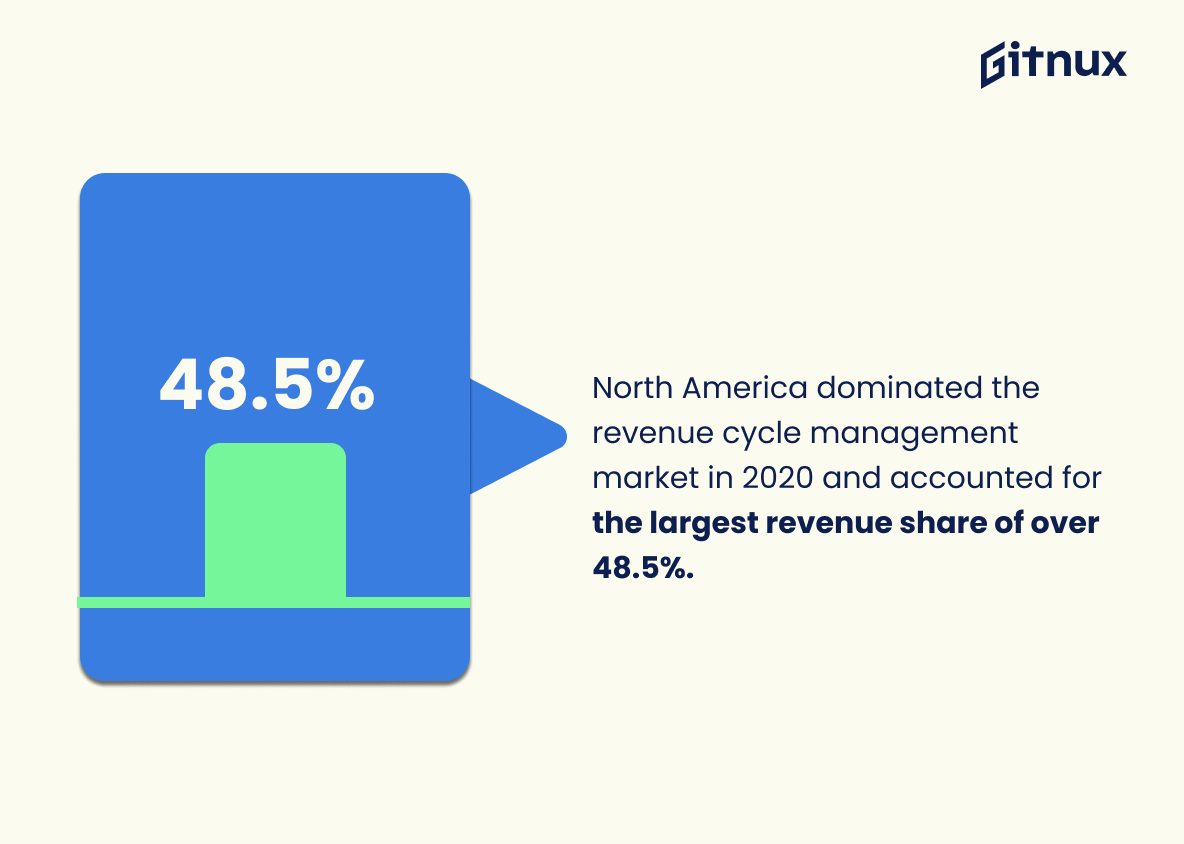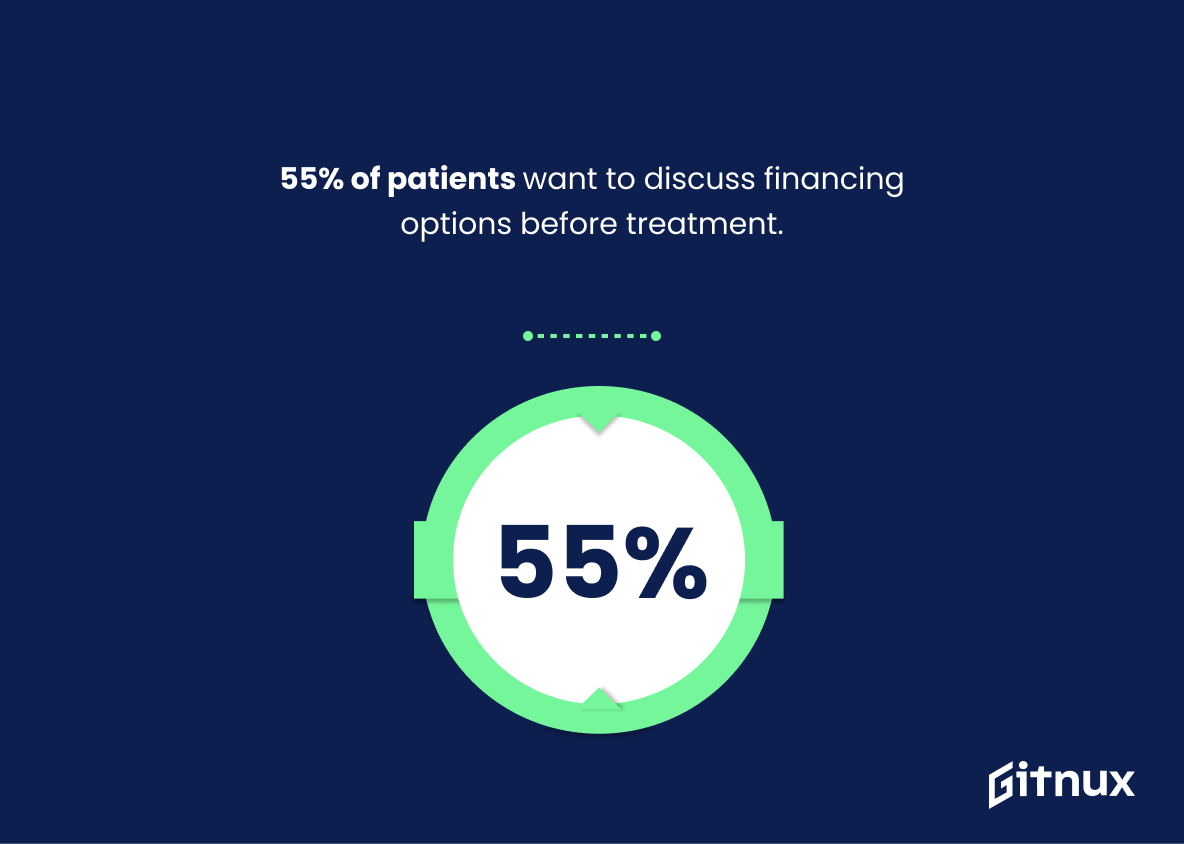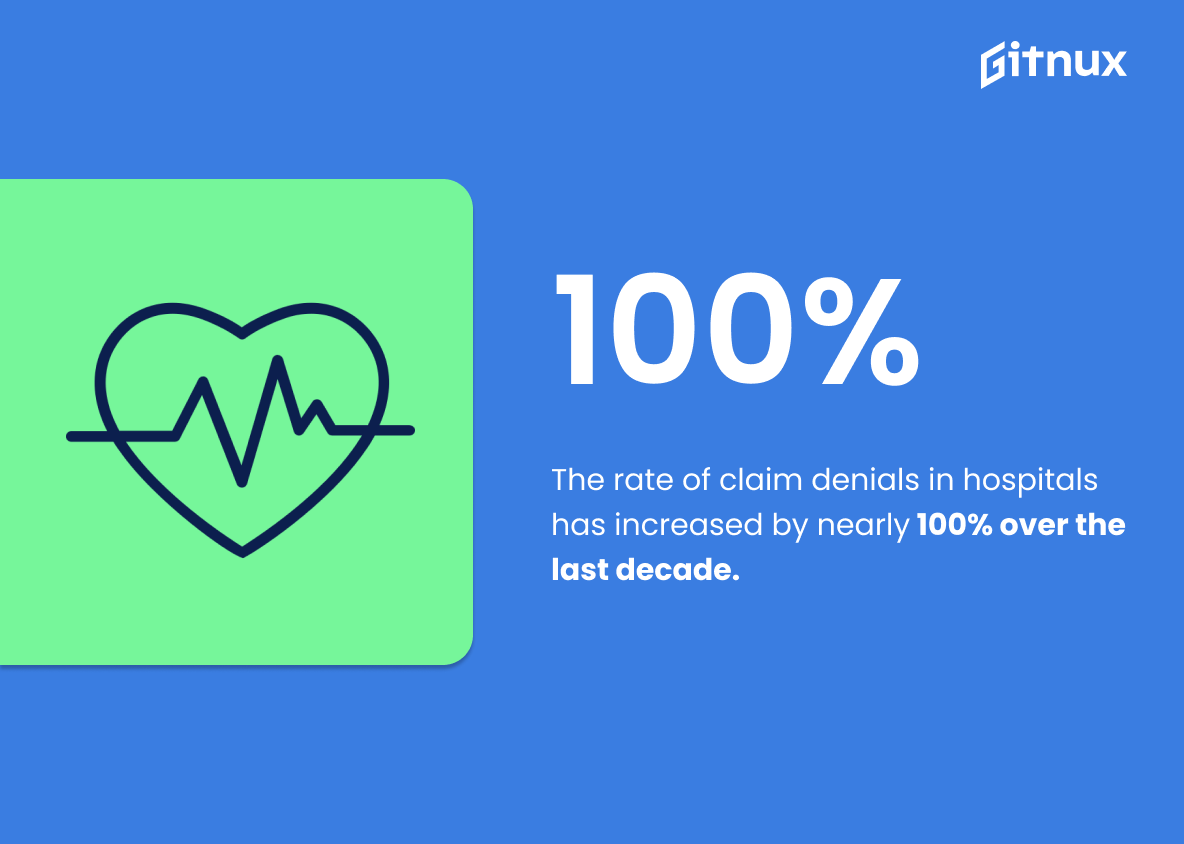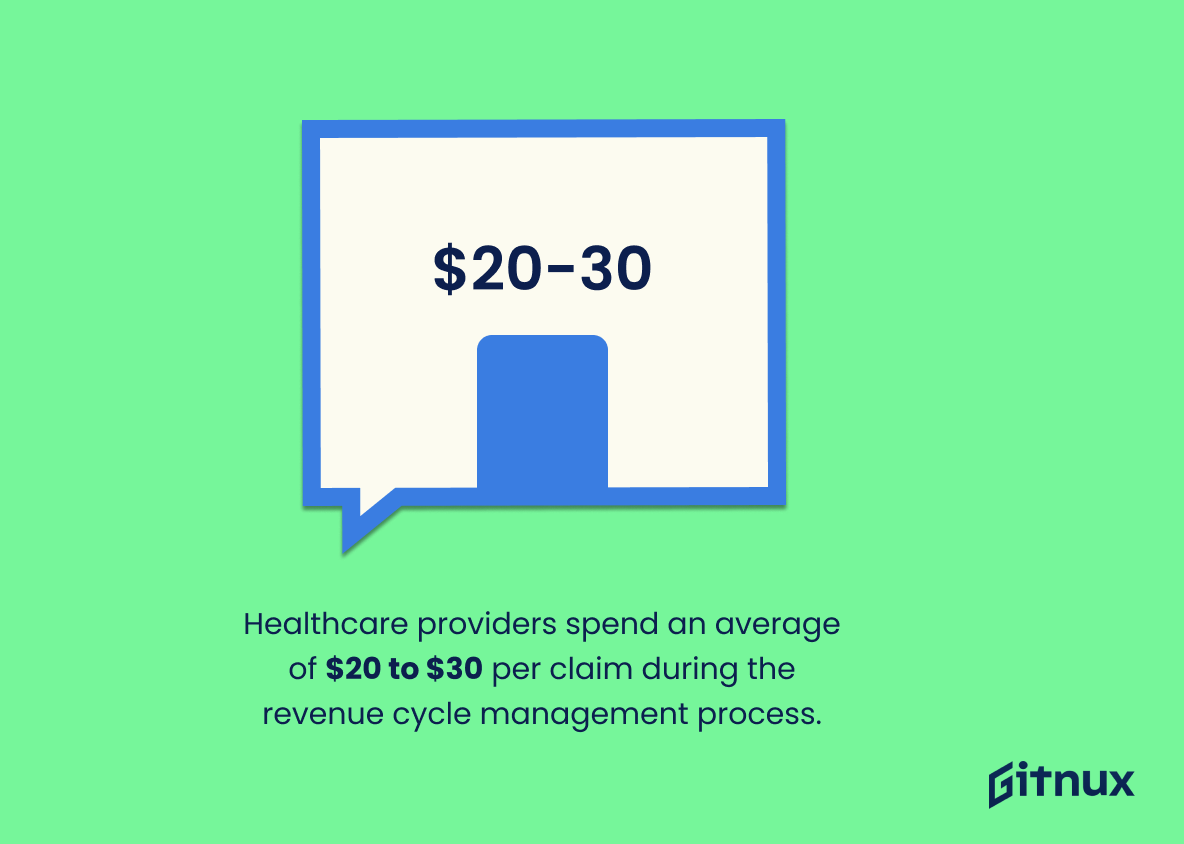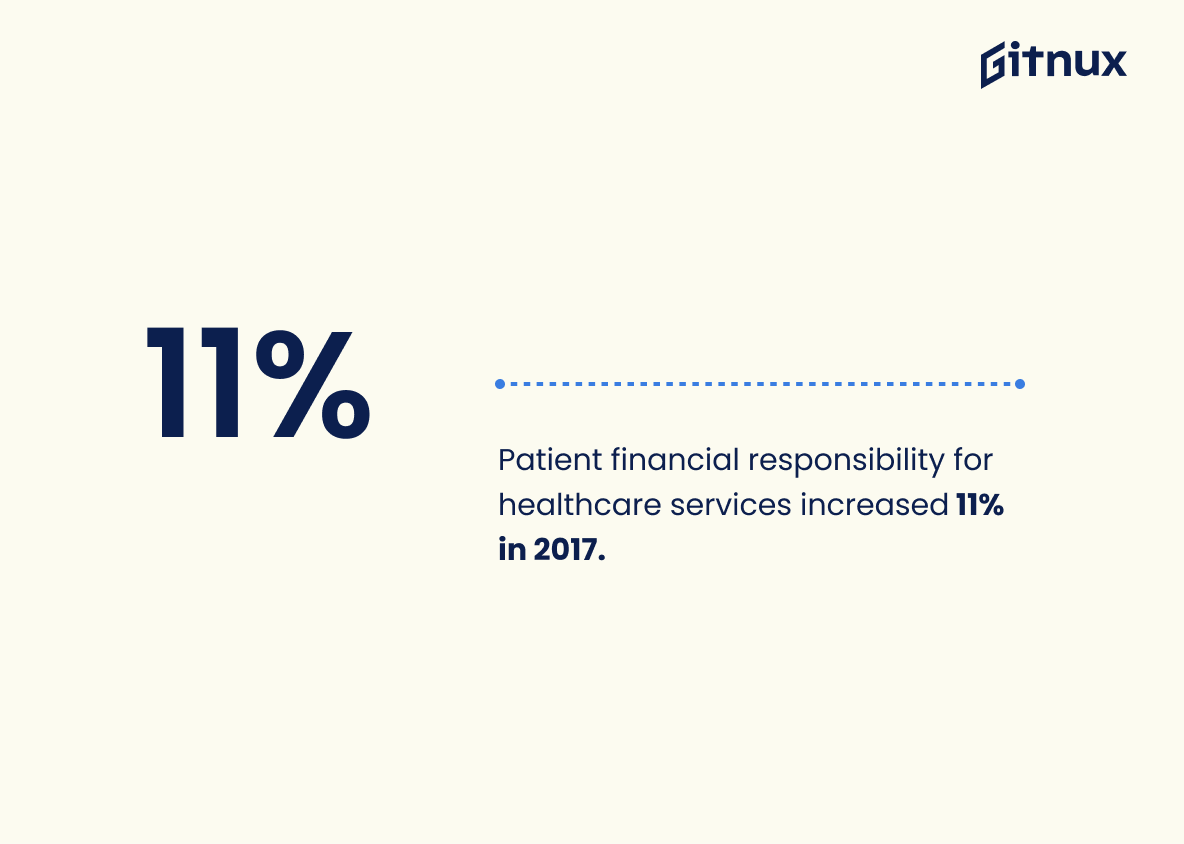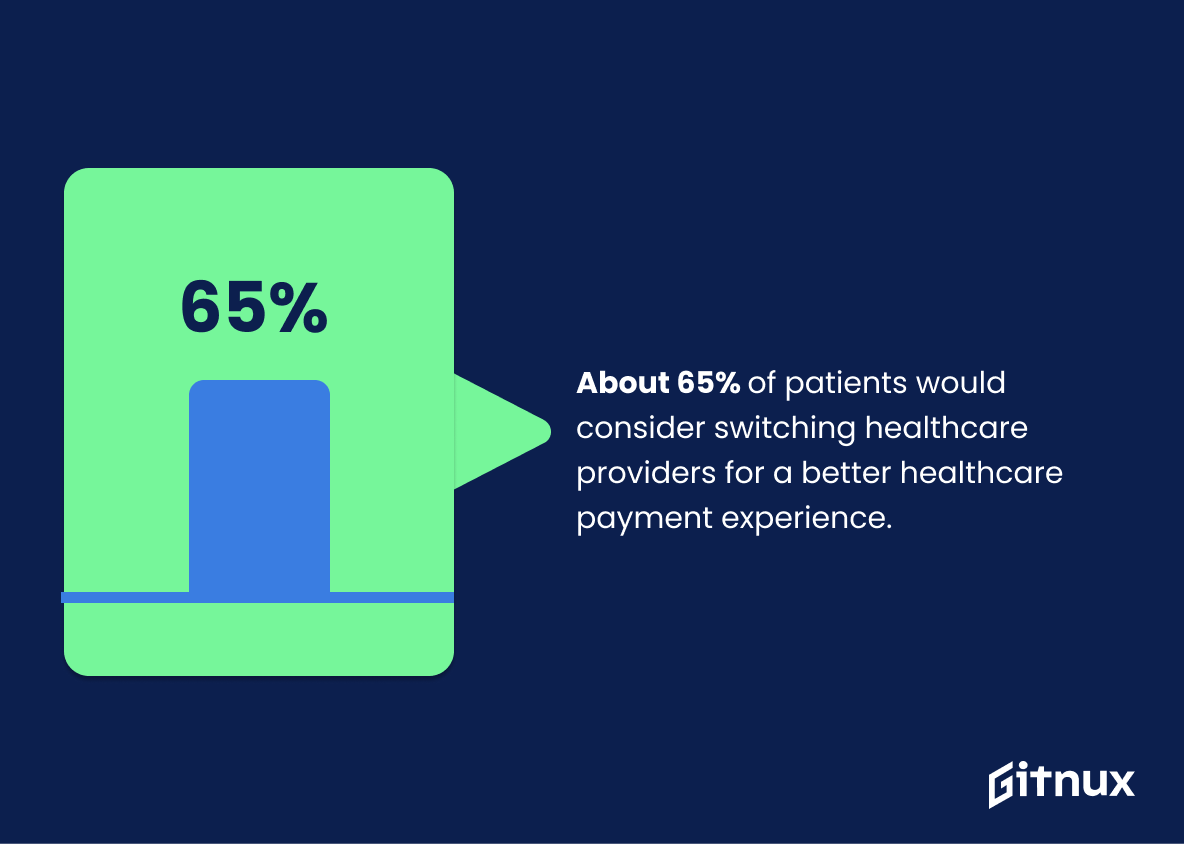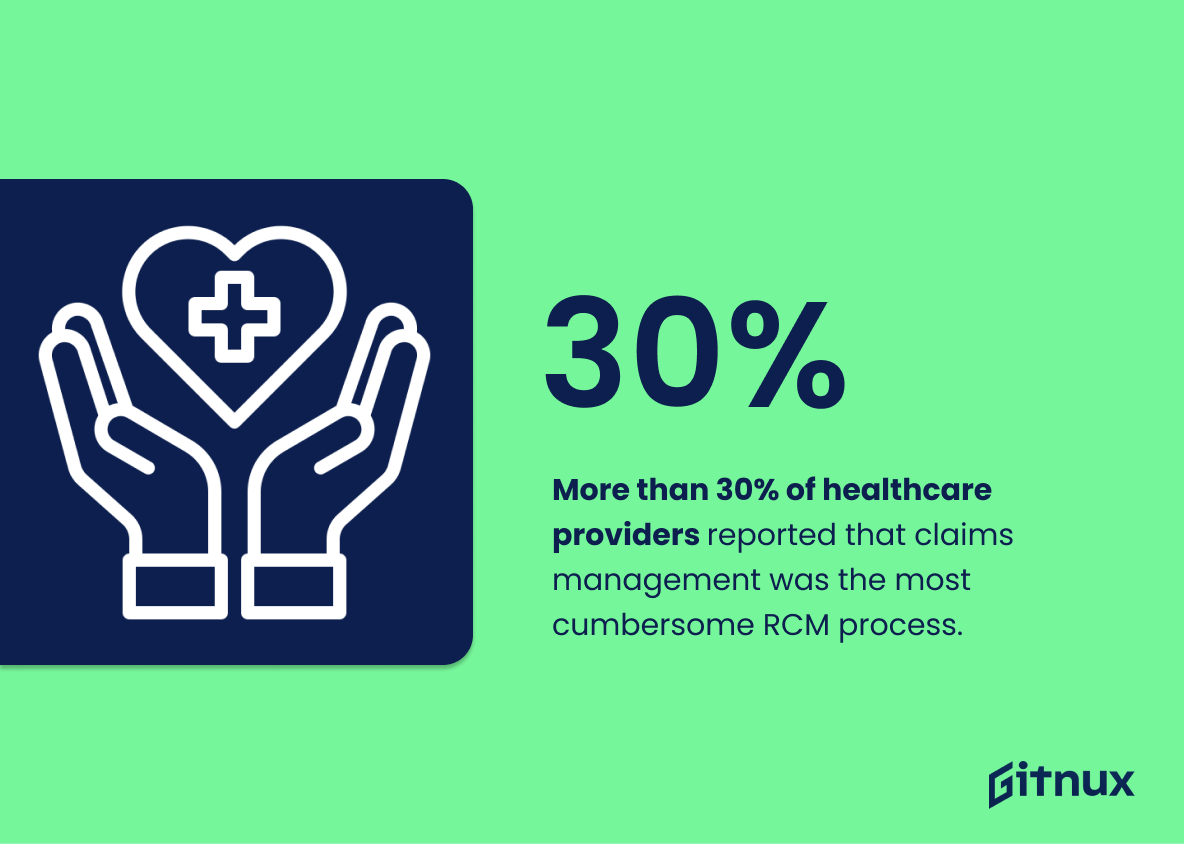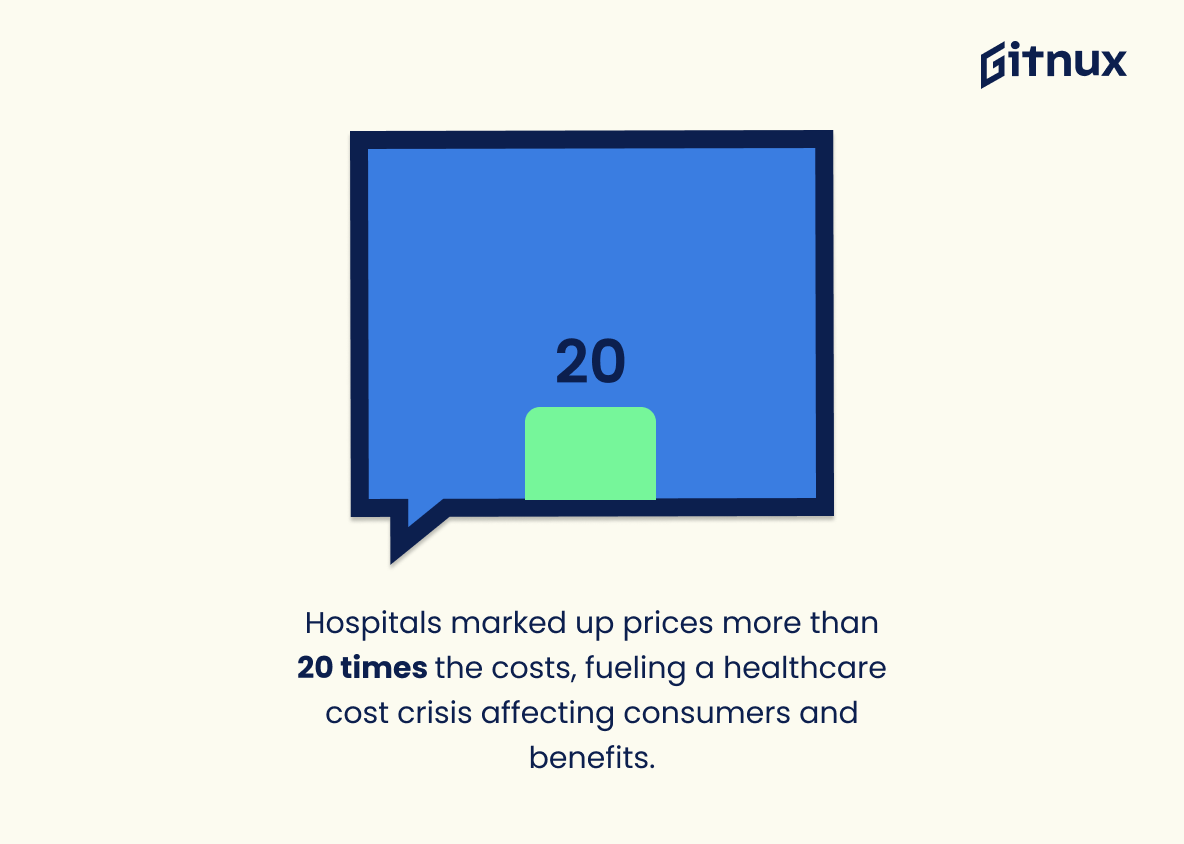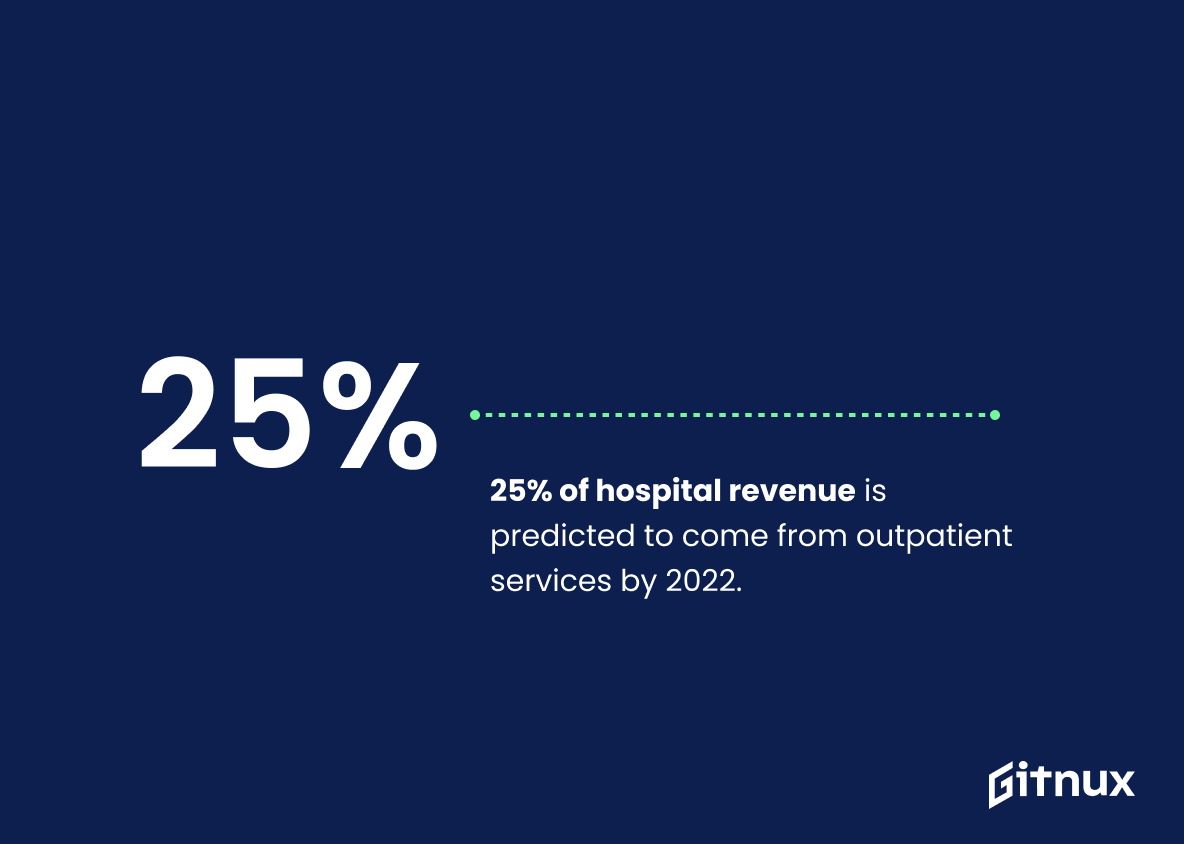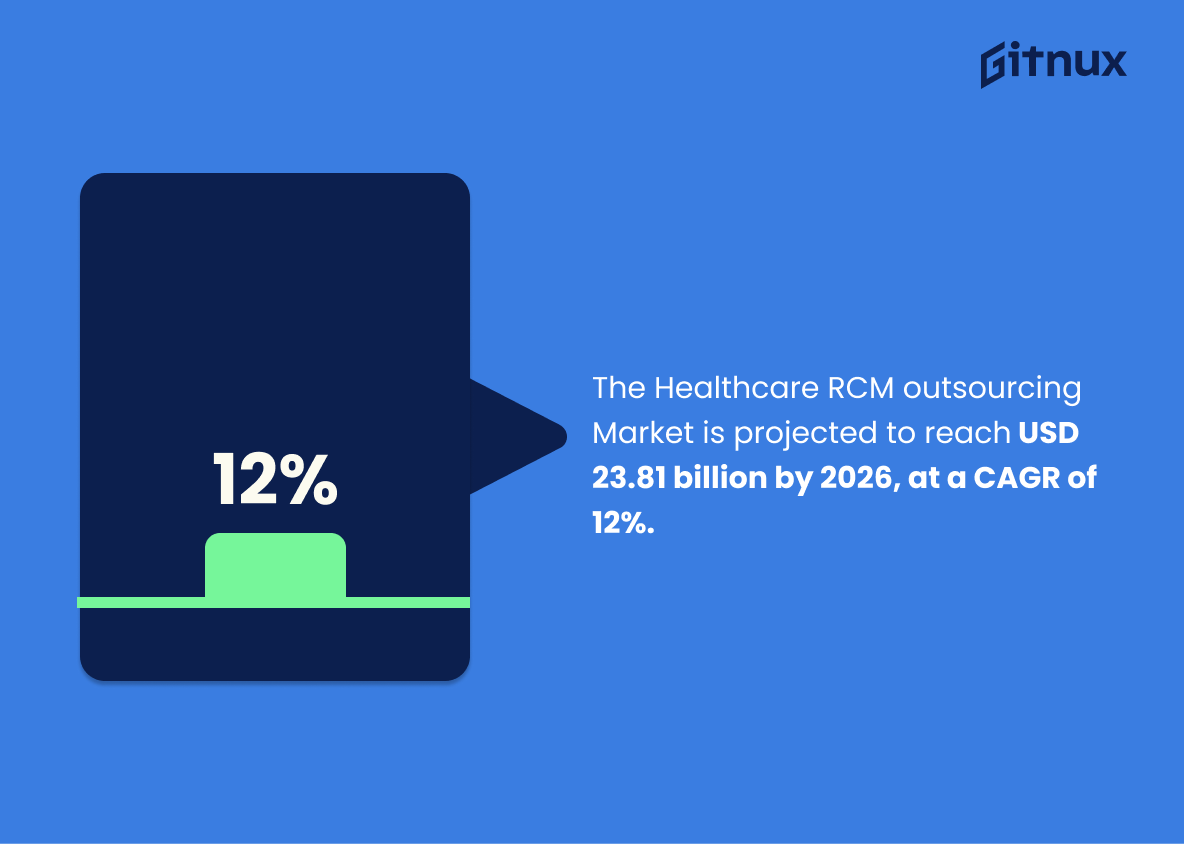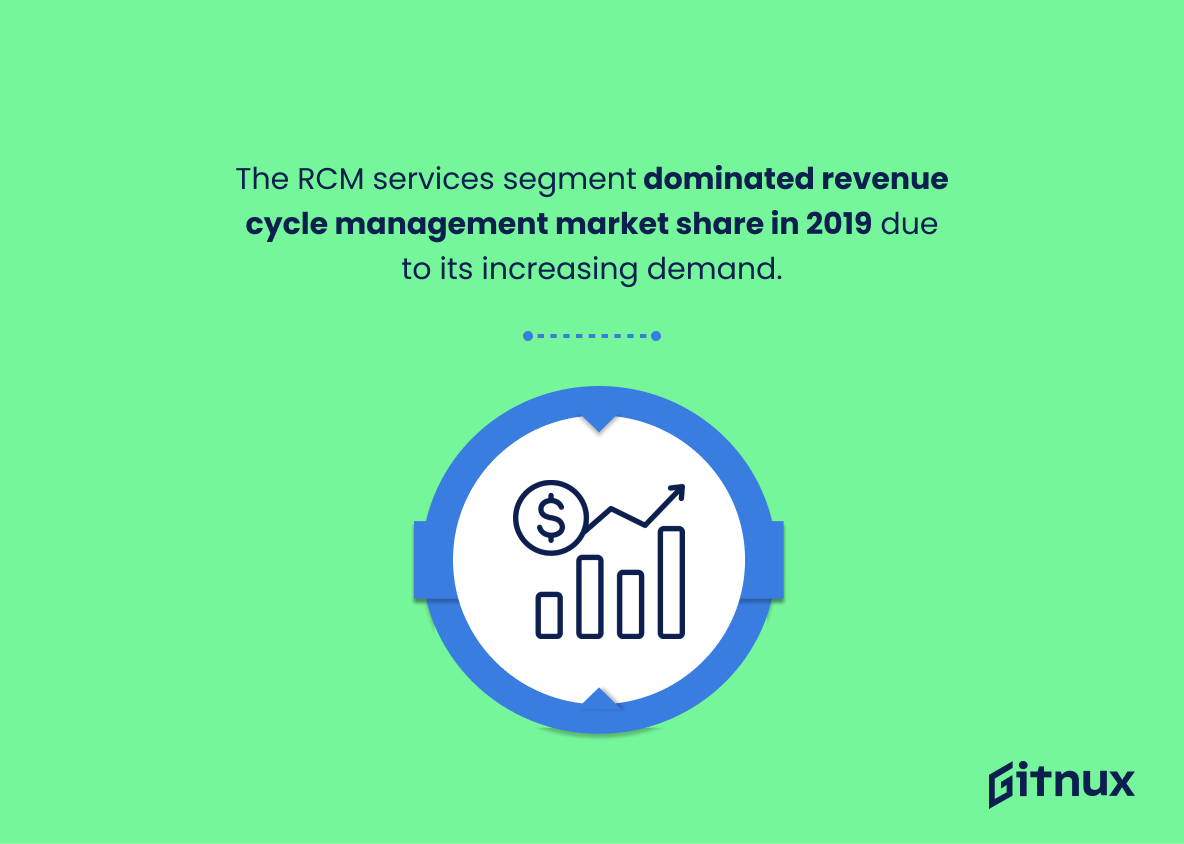Embarking on a journey through the labyrinth of healthcare financial management can often seem like a challenging venture. Central to this can be getting to grips with the concept of Revenue Cycle Management (RCM). Over the years, RCM has proven to be instrumental in the successful operation of healthcare entities of all sizes. Whether you’re a seasoned professional in the field, or just flirting with the concept, understanding the industry’s current statistics key. As such, in this blog post, we are going to delve deep into the quantitative world of Revenue Cycle Management as we explore, analyze and dissect the latest and most influential industry statistics. Buckle up, as we’re set to demystify the numerical aspects of RCM, providing valuable insights along the way.
The Latest Revenue Cycle Management Industry Statistics Unveiled
The global revenue cycle management market size was valued at USD 65.81 billion in 2020.
Drawing from the undeniable supremacy of numbers, a single glance at the commanding valuation of the global revenue cycle management (RCM) market paints a compelling picture of the economic significance of this sector. The towering USD 65.81 billion figure of 2020 underscores the overwhelming engagement wide-ranging industries have with this domain, further augmenting the gravity of RCM in today’s rapidly digitalizing marketplace.
Unfolding within this staggering sum are narratives of countless transactions, market dynamics, technological advancements, and company-wide strategies, all converging to fuel this vibrant industry. Hence, in a blog post discussing revenue cycle management industry statistics, such a mighty valuation stands as a commanding beacon, unearthing the burgeoning need for specialized RCM services and solutions globally – a testament to the industry’s potency and its assertive trajectory of growth.
The market is expected to expand at a compound annual growth rate (CAGR) of 12.0% from 2021 to 2028.
With the inescapable shift towards a more digitized era, the forecasted CAGR of 12.0% through 2021 to 2028 takes on a pivotal role. Imagine loosening a champagne bottle cork; the pressure’s building, ready to pop. Similarly, this statistic surges as a powerful testament to the burgeoning growth of the Revenue Cycle Management (RCM) industry.
Regard it as the engine fuelling this disruption in healthcare technology. As businesses strategize their investments in RCM, this figure serves as a beacon, shedding light on phenomenal future prospects. These numbers don’t merely reflect some good fortune; they exemplify the dynamic shift in financial processes in healthcare, driven by innovation, efficiency, and performance. Thus, acting as a compass, the 12.0% CAGR directs stakeholders to the potential goldmine in the thriving landscape of the RCM industry. The ripples, then, of this statistic reach far and wide – it’s the heartbeat that keeps the promise of RCM growth alive.
Healthcare revenue cycle management outsourcing market is predicted to surpass USD 23.1 billion by 2027.
Undeniably, the projected leap of the healthcare revenue cycle management outsourcing market to an impressive USD 23.1 billion by 2027 serves as a beacon, illuminating the robust growth and vitality of the sector. This particular insight is pivotal when unravelling the narrative of the Revenue Cycle Management Industry Statistics on a broader scale. It effectively signals the escalating reliance on outsourcing as a cost-effective solution, thus underscoring a massive transition in the way healthcare organizations operate their revenue cycle management. Therefore, exploring this projection can aid industry players and stakeholders in strategizing for the future, aligning their business models with the industry’s trajectory, and pioneering value-based solutions that resonate with the evolving market trends.
North America dominated the revenue cycle management market in 2020 and accounted for the largest revenue share of over 48.5%.
With a commanding presence, North America donned the crown as the reigning champion in the Revenue Cycle Management market for 2020. Sweeping the stage clean, it proudly claimed the lion’s share of revenue, boasting an impressive statistic of generating over 48.5% of the total. This particular piece of data paints a grand portrait of North America’s dominate prowess in the industry serving as a beacon of influence and growth. The significance of this statistic in the Revenue Cycle Management Industry landscape cannot be understated. It provides a guide for emerging players to glimpse the potential for growth, thrusts forward the power of effective revenue management and shines a spotlight on where industry trends might orbit in the near future.
55% of patients want to discuss financing options before treatment.
In the realm of Revenue Cycle Management Industry Statistics, the figure ‘55% of patients desire to discuss financing options preceding treatment’ shines a spotlight on a crucial healthcare fact. As a beacon, it signals an intersection between patient education, financial transparency, and revenue management. In essence, it speaks to patients’ growing financial consciousness and their desire for a clearer understanding of their healthcare costs before proceeding with treatment. It nudges healthcare providers to foster this dialogue, crucially influencing factors like patient satisfaction, upfront collections, and revenue cycle efficiency. Hence, it underscores an undeniable catalyst for change in healthcare financial discussions, and consequently, in the revenue cycle management industry’s strategies.
The rate of claim denials in hospitals has increased by nearly 100% over the last decade.
Delving into the landscape of Revenue Cycle Management, a startling revelation comes to light – the rate of claim denials in hospitals has surged nearly 100% over the past decade. This information serves as a pulsating heart in comprehending the transformation of the industry’s dynamics.
For starters, claim denials have a substantial impact on the cash flow of hospitals and healthcare institutions. The substantial increase implies hospitals faced challenges in receiving payments, causing Revenue Cycle Management processes to become more complex and financially strenuous.
Furthermore, this rising tide of denials opens a discussion for the urgent need for effective measures in managing healthcare revenue cycle systems to assure accurate coding and billing, which is the industry’s lifeline. This becomes a thermometer for health institutions to monitor their health against administrative pitfalls and the sophistication of payment insurers and thus drives the thrust forward for technological advancement within the industry.
Finally, this surge also shadows the increased focus on patient empowerment and consumerism in healthcare. With the claim denial number climbing at an alarming rate, patients become more likely to bear increased out-of-pocket costs, turning focal lenses on how Revenue Cycle Management can adapt to meet these changes.
So, this astonishing rise revealed in industry statistics is not merely a number. Instead, it is a mirror reflecting the Revenue Cycle Management’s current state, a compass directing its future course, and a spark triggering industry-wide innovation and transformation.
Healthcare providers spend an average of $20 to $30 per claim during the revenue cycle management process.
Drawing attention to the considerable amount of $20 to $30 spent by healthcare providers per claim during the revenue cycle management process is a noteworthy indicator of the substantial costs involved in healthcare finance administration. In relation to Revenue Cycle Management Industry Statistics, this figure underscores several key insights: the financial pressure on healthcare providers, the potential room for efficiency gains, and the critical role of effective revenue cycle management in reducing these costs. Additionally, it places a spotlight on the specific cost per claim, a significant parameter for benchmarking, comparison, and improvement in the industry. Therefore, in the ecosystem of healthcare economics, such a statistic not only offers a perspective into the current state of affairs but also harbors the potential for actionable strategies for cost reduction.
Patient financial responsibility for healthcare services increased 11% in 2017.
Within the vibrant tapestry of Revenue Cycle Management Industry Statistics, the strand depicting an 11% increase in patient financial responsibility for healthcare services in 2017 weaves an eye-catching narrative. It paints a potent picture of the shifting financial burden toward patients transforming the revenue cycle landscape. Accordingly, this datum compels the industry to upgrade their strategies, including sharpening their price transparency, amping up patient communication, and finding innovative ways to streamline billing – key factors that can impact the trajectory of the industry’s revenue dynamics.
About 65% of patients would consider switching healthcare providers for a better healthcare payment experience.
In the vibrant tapestry of Revenue Cycle Management Industry Statistics, the stat denoting ‘About 65% of patients considering to switch healthcare providers for a better healthcare payment experience’, shines as a glaring signal light. It underscores the crucial role of payment experience in determining patient loyalty and satisfaction, thereby potentially impacting the financial health and stability of healthcare providers. In other words, while focusing on providing the best therapeutic care, healthcare providers can’t afford to overlook the patient’s financial experience.
The revenue cycle’s engine is fueled not only by effective treatments and services but also by a smooth and patient-friendly payment system. With a substantial proportion of patients (65%) willing to switch lanes for a better payment experience, RCM professionals are nudged towards enhancing their billing, payment, and collection processes. Therefore, this statistic proves to be a meaningful wake-up call for providers, urging them to foster a holistic and satisfying patient experience, starting from medical treatment right up to financial resolution. Besides, it also presents an opportunity for RCM service providers to offer innovative and tailored solutions that cater to this growing demand for better payment experiences.
In essence, this statistic serves as a guiding star, directing the RCM industry to tighter revenue leakages and drive patient retention, directly influencing their success narrative.
The demand for cloud-based RCM solutions will increase by 20% by 2024.
This insightful projection serves as a beacon lighting the future path of the Revenue Cycle Management (RCM) industry. It forecasts an emergent shift towards cloud-based platforms, a revelation that duly underlines the growing preference for digital systems. As we delve deeper into the significance of this quantitative escalation, we notice it confidently mirrors the prevailing trend; a sweeping transition encompassing numerous sectors, including healthcare.
The substantial 20% increase not only emphasizes the acceptance of cloud technology but also echoes the relentless demand for efficiency and seamless operations. Essentially, it underscores a resolute navigational shift for RCM operators – steering away from traditional methods and sailing towards contemporary, cloud-based solutions.
This magnitude of ascension projected, encapsulates more than just percentages or numbers. It fundamentally encapsulates the essence of adaptability, readiness, and modernization prevalent amongst RCM providers – a robust testimony of adhering to innovative technology trends to meet rising customer demands. Undeniably, it manifests the desirable growth trajectory for the industry, thereby shedding light on future investment areas, underscoring potential market opportunities, and ultimately unveiling prospects for those sailing the RCM industry waters.
More than 30% of healthcare providers reported that claims management was the most cumbersome RCM process.
This striking statistic punctuates one of the most compelling narratives in the Revenue Cycle Management (RCM) Industry. The challenging reality is that over 30% of healthcare providers identify claims management as the most intricate, demanding aspect of RCM. This percentage unveils a critical bottleneck in the ability of healthcare providers to collect and manage their revenue efficiently. Weaving this statistic into the broader thread of RCM industry statistics significantly bolsters the case for innovative solutions or services that could smooth this cumbersome process, supercharging efficiency, and profitability in this multibillion-dollar industry.
Hospitals marked up prices more than 20 times the costs, fueling a healthcare cost crisis affecting consumers and benefits.
Painting the picture of the intricate web spun within the Revenue Cycle Management (RCM) industry, our statistic of hospitals marking up prices more than 20 times the cost signify an inexorable financial undertow. It lays bare the enormity of the healthcare cost conundrum engendered by these alarming markups, steadily gnawing at consumers’ pockets and benefits.
This statistic illuminates the stark reality of a financing model skewed towards creating steep financial impediments that could deter many from seeking necessary healthcare services. However, in the context of a blog on Revenue Cycle Management Industry Statistics, it serves an even larger purpose to provoke a deep-dive examination into the industry’s practices.
Tangled deep into the healthcare revenue cycle’s fabric, these disproportionate markups hint at an industry in desperate need of transparency, price standardization, and more consumer-friendly practices. Yet, it also implicitly cues the immense opportunity for innovation and systemic reform within the RCM industry.
For those poised at the cusp of such change, entrepreneurs and RCM professionals alike, this striking statistic provides valuable insight into the scope for improvement, strategic revamps, and innovation in price-setting mechanisms. Indeed, spotlighting such a stark disparity between hospital costs and consumer charges, it becomes not just a commentary on a prevailing issue, but an implicit call to action for those within the RCM industry.
25% of hospital revenue is predicted to come from outpatient services by 2022.
Projected to account for a lucrative quarter of hospital revenue by 2022, outpatient services are bound to energetically stir the hot pot of Revenue Cycle Management (RCM) industry. This impending shift marks a significant pivot away from traditional inpatient services, essentially recoloring the revenue landscape of healthcare facilities.
Intensifying its intrigue, this shift serves as a clear testament to the evolutionary strides being made in modern healthcare – leaner, faster, more cost-effective services are the call of the day, and outpatient care perfectly fits this bill. For RCM strategists, this statistic serves as both a compass and a clock; guiding not just the direction but also the pace of their tactical preparations.
Ultimately, with its immediate implications on billing, insurance claim processing, and fiscal sustainability of hospitals, this statistic looms large over the future of revenue cycle management, sketching broad strokes of fiscal realities yet to unfold. Staying ahead in the game requires mastery of this shift, making this statistic a critical piece in the RCM puzzle.
The Healthcare RCM outsourcing Market is projected to reach USD 23.81 billion by 2026, at a CAGR of 12%.
Highlighting the projection that the Healthcare RCM Outsourcing Market is set to soar to USD 23.81 billion by 2026, experiencing a Compound Annual Growth Rate (CAGR) of 12%, provides a compelling testament to the escalating importance and prevalence of outsourcing in the Revenue Cycle Management industry. Not only does it underscore the potential profitability in the sector, it also signifies the increasing reliance of healthcare establishments on outsourced RCM solutions in their quest for efficiency, accuracy, and cost-effectiveness. Equally noteworthy is the predicted growth rate of 12% CAGR, indicating a robust, thriving sector with immense opportunities for all stakeholders, and painting an enticing picture for prospective investors and industry professionals alike. This statistic calls attention to trends that have implications beyond the financial, touching on technological advancements, changing business practices, and the transformation of the healthcare industry at large.
The RCM services segment dominated revenue cycle management market share in 2019 due to its increasing demand.
Drawing upon the compelling data, it’s intriguing to observe that the RCM services segment stole the limelight in 2019 by dominating the revenue cycle management market share. This sweeping rise leaves an indelible mark on our understanding of the Revenue Cycle Management industry’s direction. The burgeoning demand for these services is the striking feature that propelled this phenomenon. It insinuates a strong predilection towards RCM services in the market, consequently pointing towards specific investment and development areas for the industry stakeholders. Thus, a blog post discussing Revenue Cycle Management Industry Statistics could not overlook this significant pivot in the market landscape.
The integrated segment of the Revenue Cycle Management industry was valued at USD 41.34 billion in 2019.
Highlighting the staggering valuation of the integrated segment of the Revenue Cycle Management industry at USD 41.34 billion in 2019 serves as a testament to the considerable scope and weight of this industry segment. It not only paints a vivid picture of the significant impact and role it plays within the broader industry, but also sets the stage for observing trends, conducting comparisons, and foreseeing the potential for growth in the future. Utilizing this quantifiable measure in a blog post about Revenue Cycle Management Industry Statistics, effectively anchors discussions, permits in-depth analyses and offers readers a clear perspective on the substantial value this fast-paced segment holds within the industry.
The Asia Pacific region is expected to show the highest CAGR in revenue cycle management market during the forecast period.
In the swirl of numbers and data around the Revenue Cycle Management Industry, one statistic shines a spotlight towards the East. The Asia Pacific region, it seems, is galloping at the highest Compounded Annual Growth Rate (CAGR) in the market of revenue cycle management. This forecast not only highlights the potential inherent in this part of the world, but also illuminates a new row of opportunities for investors and businesses in this industry. Imagine the layers of untapped potential and growth possibilities that these figures unravel; like finding a new territory on a treasure map.
Conclusion
In sum, understanding the state and trends of the Revenue Cycle Management industry through comprehensive statistics is vital in today’s fast-paced healthcare system. The indicators reveal the challenges, successes, and opportunities for improvement in this ever-evolving industry. Staying updated on these industry statistics ensures businesses can make data-driven decisions, strategically address issues, and capitalize on growth opportunities. Ultimately, this knowledge will serve as a compass, leading the way to effective management, increased revenue, and improved patient satisfaction. So whether you are an industry expert or newcomer, keeping a close watch on the Revenue Cycle Management industry statistics is essential to your success.
References
0. – https://www.www.athenahealth.com
1. – https://www.www.grandviewresearch.com
2. – https://www.www.beckershospitalreview.com
3. – https://www.www.gminsights.com
4. – https://www.www.instamed.com
5. – https://www.www.ncbi.nlm.nih.gov
6. – https://www.linked.md
7. – https://www.www.hfma.org
8. – https://www.hitconsultant.net
9. – https://www.www.fortunebusinessinsights.com
10. – https://www.nostops.org
11. – https://www.www.marketsandmarkets.com
12. – https://www.www.marketwatch.com
